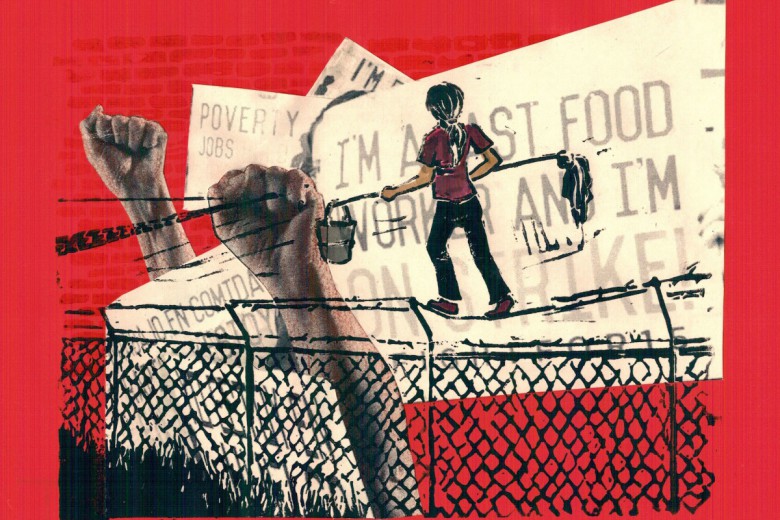
Pop quiz: Can you name three workplace benefits won by Canadian unions in the past century? What are some of the biggest labour organizations in Canada? What is the Rand formula?
As a Briarpatch reader, chances are you’re able to answer questions like these. But if you’re an average Canadian high school student, that’s likely not the case.
When young people enter the workforce for the first time, they generally know little about the organizations that fought for such benefits as maternity leave, paid vacation time, workers’ compensation, and the weekend. And yet, about 30 per cent of them will become union members, according to current figures on union density in Canada (a number that has been dropping steadily from a high of 38 per cent in the 1980s).
These young workers – and their non-unionized counterparts – should know the basic facts about unions: that they lead to higher wages, better working conditions, and more job security. However, given the relentless, effective, and ongoing right-wing assault on unions in recent decades, they might well be more inclined to view unions with indifference, or even suspicion.
Here’s where unions themselves have a role to play. As the only major organizations with the resources and self-interest to make it happen, labour organizations can develop large-scale educational programs for high schools to help teach young people about the role of unions in society, and to put a human face on organized labour. The programs could be geared toward relevant classes such as history, trades, and business.
I recently invited the president of our local labour council to speak to my students about sweatshops in the Global South. The reaction of the students indicated they’d never made the connection between humane working conditions and organized labour.
Several examples exist of regional labour organizations taking relatively small steps into public schools. The Toronto and York Region Labour Council recently developed a presentation aimed at high school classes called “How Have Unions Helped Us?” (available for viewing online). Both Quebec’s and B.C.’s labour federations have well-developed youth education programs dealing with worker rights as well as health and safety. And labour-affiliated workplace safety programs exist in all three Prairie provinces.
Individual unions have also joined the game. The United Food and Commercial Workers Canada runs a program called “Democracy @ Work,” which the union estimates has reached more than 10,000 students since 2001. The Canadian Auto Workers Union (CAW) has also run a variety of school-based labour education programs, which at one point reached 125,000 students across Canada each year according to CAW’s national coordinator of health, safety, and environment, Ken Bondy.
To put those numbers in perspective, consider that there are about 700,000 high school students in Ontario alone. Clearly, hundreds of thousands of Canadian students are graduating without any first-hand interactions with organized labour.
Some within the labour movement argue that unions are the wrong organizations to be taking the lead on labour education in public schools. Dr. Alan Hall, director of labour studies at the University of Windsor, runs a program where students in his department deliver presentations on labour laws and workers’ rights to local high-school classes. Hall says the program has become so popular that he no longer needs to promote it. He attributes its success partly to the fact that it doesn’t come from unions directly. “A lot of teachers just aren’t interested in bringing the unions in,” says Hall.
Indeed, unions are certainly sensitive to charges of being “too political” in classroom presentations. “We don’t want to go into schools and tell people who the best party is for them,” says Bondy of CAW. Similarly, the Quebec Federation of Labour’s guidelines for classroom presenters warns against the “self-promotion” of unions in the classroom.
It’s worth noting, however, that business-friendly entrepreneurship programs like Junior Achievement (JA), sponsored by a who’s who of corporate giants, are routinely welcomed into classrooms without a whisper of protest – this despite the fact that students are many times more likely to make a living as a waged or salaried worker than as a business owner.
“There certainly is a need to counter all the anti-union stuff that [students] tend to hear,” says Hall. “High-school curriculums don’t really address labour history in a meaningful way.”
And it’s hard to imagine who else but unions themselves would have the resources and the organizational depth necessary to take on an educational campaign of the scope needed to counter pervasive anti-union sentiment in the corporate media.
However it chooses to do it, labour needs to get its message into schools – and soon.






